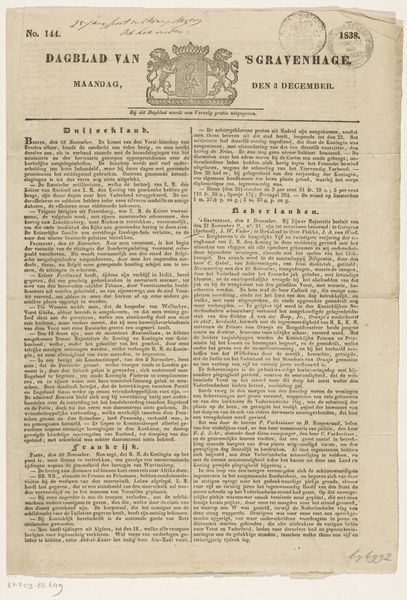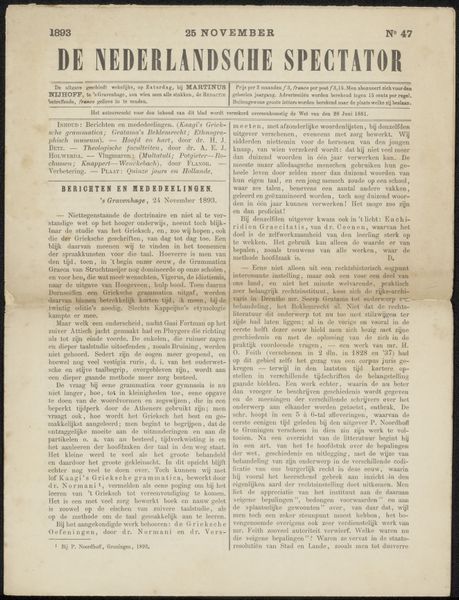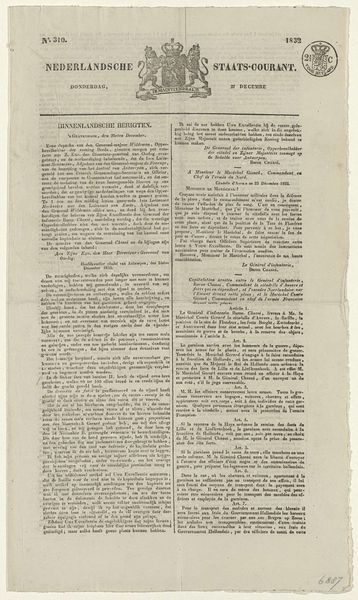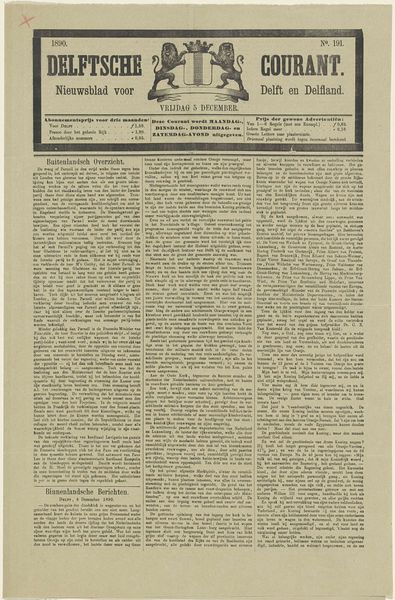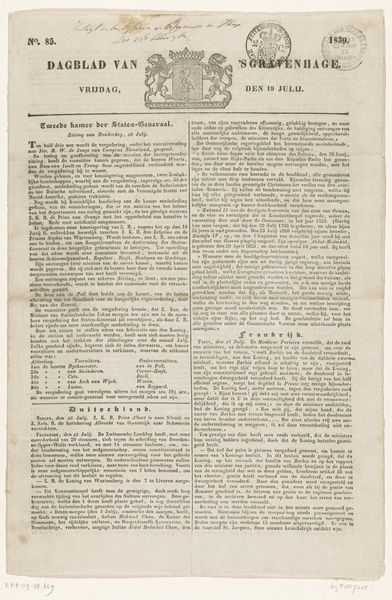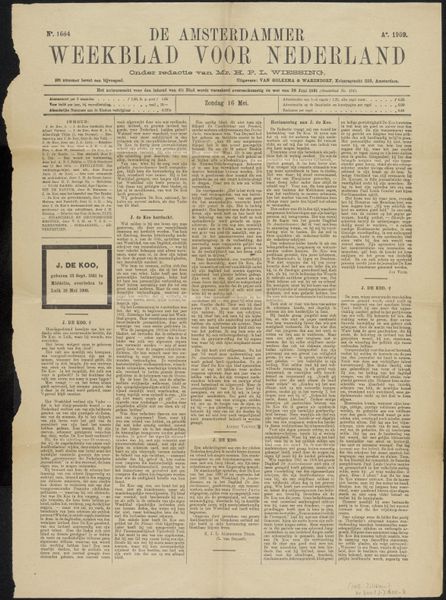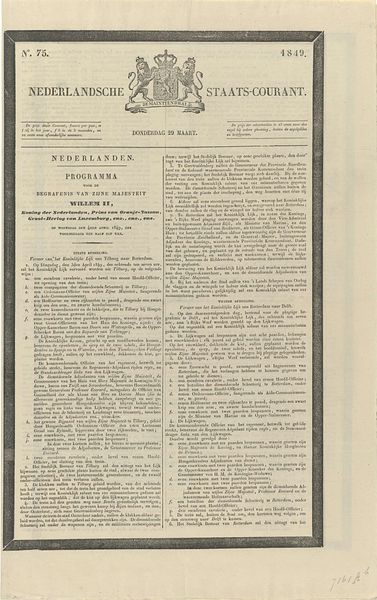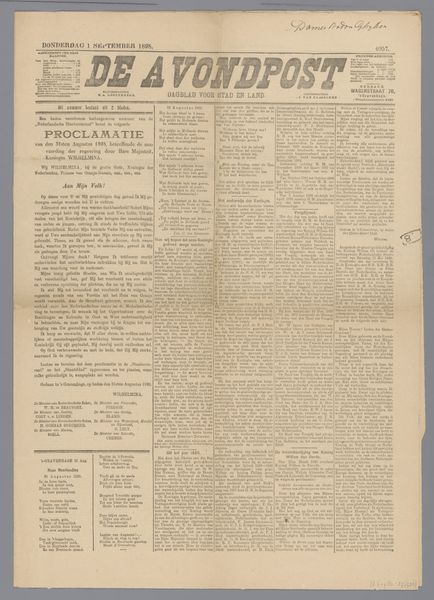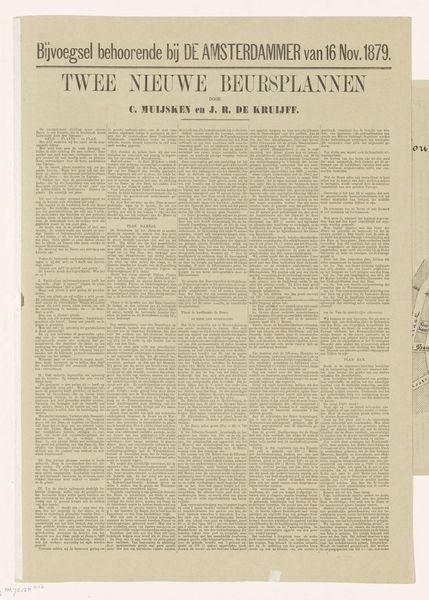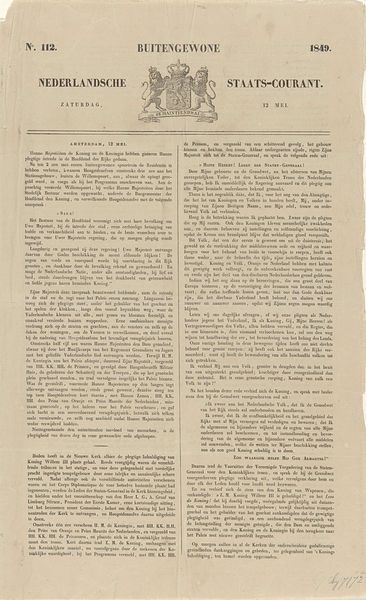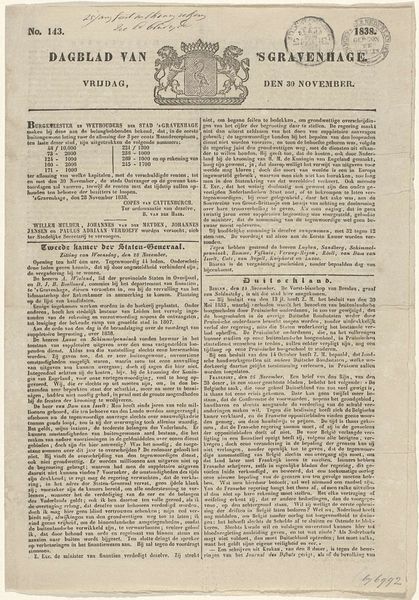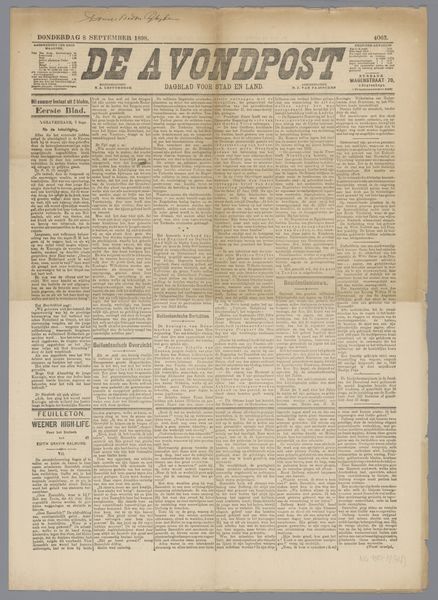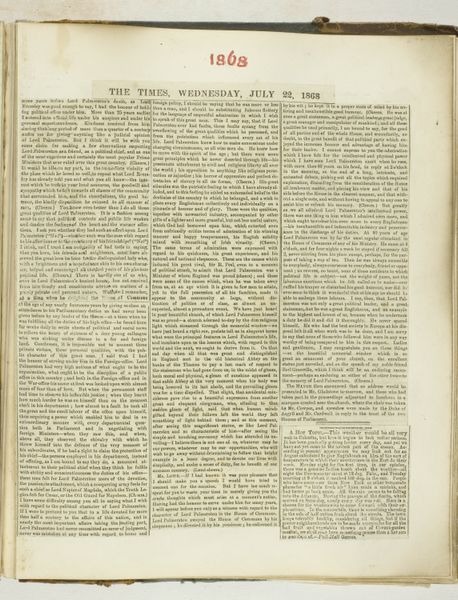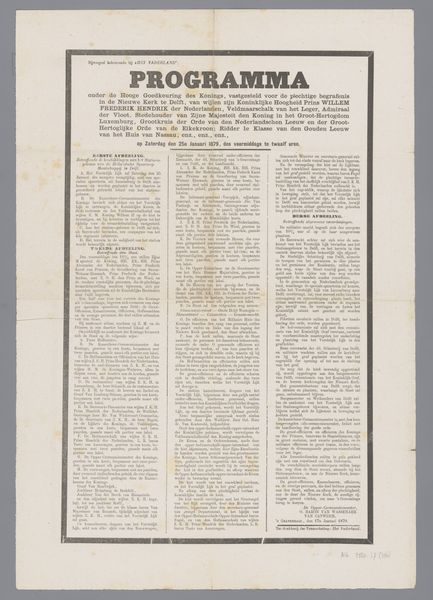
graphic-art, print, typography
#
script typeface
#
graphic-art
#
aged paper
#
dutch-golden-age
# print
#
hand drawn type
#
paragraph style
#
typography
#
stylized text
#
thick font
#
handwritten font
#
classical type
#
historical font
#
columned text
Dimensions: height 555 mm, width 455 mm
Copyright: Rijks Museum: Open Domain
Editor: So this is an interesting print, a news broadside actually, titled *Extra-courant van 18 maart 1793*, possibly from that same year, created by J. Peppelenbos. It's essentially dense columns of aged text. I find it kind of visually overwhelming. How would you approach analyzing this piece? Curator: As a materialist, I'm immediately drawn to the process of its production. Think about the labour involved: the typesetter painstakingly arranging each letter, the press operator working the printing press, and the paper maker creating the substrate. The ink itself, what was it composed of, how did that affect the longevity of this document? The "aged" quality we observe stems directly from the materials used and the conditions of their preservation. Are we considering this a found document or a manufactured print that has the impression of age? Editor: A manufactured impression of age, you mean, trying to give authority to its message by mimicking historical documents? I see that... Curator: Precisely! What is your sense of who might consume something like this? Editor: Considering the density of the text, it wasn't aimed at mass consumption like, say, a poster might be, I think. Perhaps wealthier merchants and nobility? What makes me wonder that are some words written with hand-drawn fonts, such as EXTRA-COURANT, which may mean this artwork might also serve for advertisement, thus potentially available for general audience. Curator: Good point! And thinking about the Dutch Golden Age, how do the format and material reflect the social and economic structures of that period? How did this print contribute to, or challenge, the flow of information and the formation of public opinion? Editor: It’s interesting to think about this as more than just a carrier of information, but also a physical object deeply rooted in the labor and social conditions of its time. I hadn’t considered that layer of materiality before. Curator: Exactly! Considering those material constraints and choices, hopefully, enriches our appreciation.
Comments
No comments
Be the first to comment and join the conversation on the ultimate creative platform.
